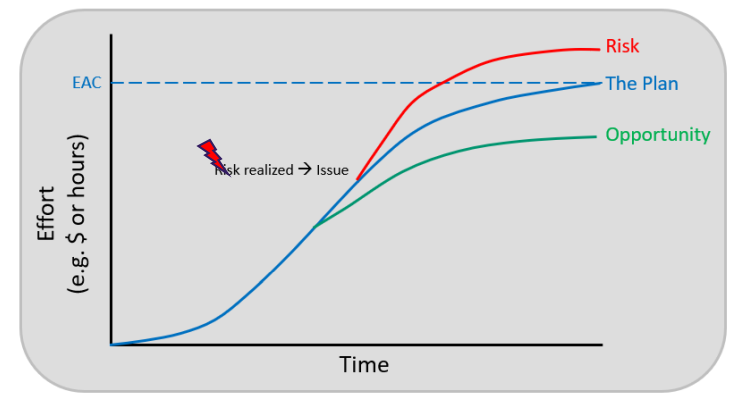My goal as a medical device development program manager is to save time while managing risk. I save time by reinforcing a concept you likely apply every day, but might not use in your medical device development project.
In my experience, dealing with the fires of the day always take precedent over managing things that might not happen in the future. (spoiler alert: those fires might have been prevented by project-managing the things that haven’t happened yet).
You likely have a great idea for a new product. You’ve raised capital. You have a PLAN. Think about planning a simple trip. You want to arrive at your destination at a specific time and be able to do what you want when you arrive (you want to hit your market date with the product you envision). You think about how to get there (drive, fly, bus, train, etc.). You plan for a hotel. You buy tickets ahead of time. Create an itinerary. This is your PLAN.
Let’s assume you drive. By driving there’s the potential flat tire or traffic jam or the ubiquitous “recalculating” from your GPS. These are the RISKS you factor into your trip planning. You might decide to pay to take a faster toll road to take advantage of an OPPORTUNITY to get there faster. We decide how to address these risks every day. But what about on a project?
What is a risk?
I think of risks as potential “things” that would negatively impact THE PLAN. In the graphic, realized risks increase the effort (hours, $) to achieve the project plan. Risks may or may not be realized (e.g. “hit” and become the urgent fire of the day) and they are typically characterized by a PROBABILITY they will hit, and the IMPACT (to cost/schedule/quality) if they do hit. Many keep a risk register to track them.

The Project/Key Stakeholders determine what Risks are worth addressing (some risks might just be accepted or monitored because their probability and/or impact are sufficiently low (getting a flat tire). A strategy is typically developed significant risks and actions taken to implement that strategy (leaving earlier during heavy traffic times).
When a risk “hits”, it becomes an ISSUE. An issue that you will likely have to deal with, often urgently.
Opportunities
Contrary to this, Opportunities are potential “things” that would positively impact THE PLAN. Opportunities rarely “hit” without effort to make them hit: they cost hours/$ to make happen.
In the graphic above the cost of pursuing Opportunities are part of THE PLAN (or added to the plan via change, or “borrowed” from management reserve because of the anticipated return on investment). Opportunities can positively impact cost/quality/schedule, or other project attributes.
Action
Avoiding risks and realizing opportunities require ACTION. Those actions should be planned. But the reality is that when we get underwater on a project, just trying to keep up with the today, actions to address risks are typically the first thing we put off. But if you ignore risks, they will become issues that you will randomly have to deal with, further complicating your personal schedule.
Think of it this way: YOU control RISKS. ISSUES (realized risks) control YOU.
Image: StarFish Medical
T. David Pyron is a Program Manager at StarFish Medical who transitioned from a career in Shipbuilding, Nuclear Engineering and Aerospace, where he was responsible for executing multiple $500M contracts. David holds a B.S. in Mechanical Engineering from the University of Notre Dame and an M.S. in Applied Physics from Old Dominion University.
